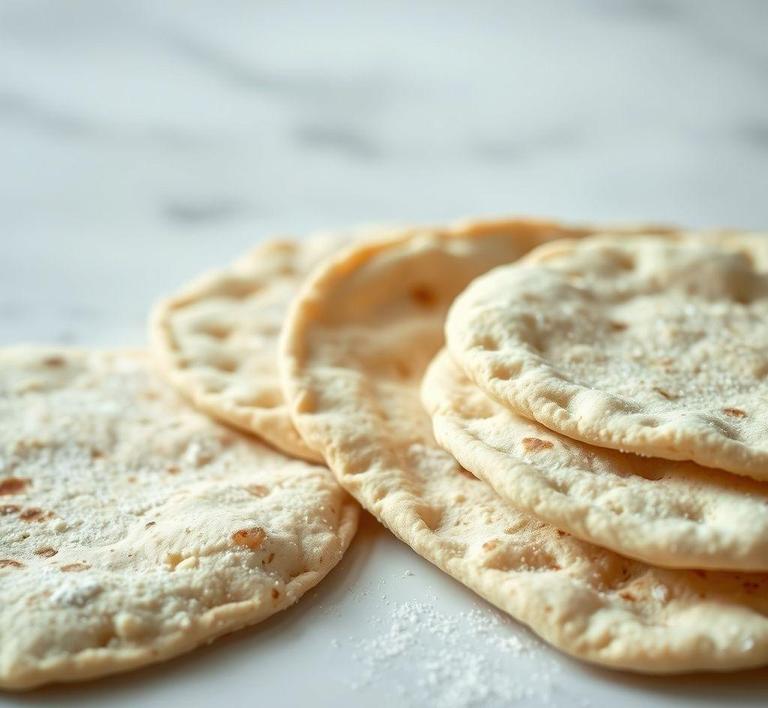If you’ve ever made a batch of fresh, uncooked tortillas and ended up with more than you could cook right away, you may have wondered whether it’s okay to refreeze them for later use. The good news is, you absolutely can! Refreezing uncooked tortillas is a great way to keep them fresh and ready to cook when you need them. This guide will walk you through the simple steps to properly refreeze uncooked tortillas without sacrificing their taste or texture. From prepping them for freezing to reheating them perfectly when you’re ready to enjoy, we’ve got you covered!
Can You Refreeze Uncooked Tortillas?

Yes, you can refreeze uncooked tortillas, but there are important caveats to consider. Whether your tortillas are flour- or corn-based, most types can be safely returned to the freezer, provided they were thawed properly and haven’t been left out at room temperature for more than two hours. This is particularly crucial for food safety, as bacteria can begin to multiply rapidly when perishable items remain in the ‘danger zone’ of 40°F-140°F.
Flour tortillas tend to fare better than corn tortillas during the freezing and refreezing process due to their higher fat content and softer structure. Corn tortillas, being more brittle and less flexible, are more likely to suffer textural degradation. Regardless of type, it’s essential to ensure the tortillas haven’t absorbed excess moisture during thawing, as this can create soggy or sticky spots that deteriorate further upon refreezing.
How To Refreeze Uncooked Tortillas?
If you’ve decided to refreeze your uncooked tortillas, taking a few deliberate steps can preserve their quality as much as possible. Here’s how to do it right:
-
Inspect and Pat Dry:
Before refreezing, inspect the tortillas for any signs of moisture or sogginess. If they feel damp, gently blot them with a paper towel. Moisture is the enemy of both texture and longevity in the freezer.
-
Separate with Parchment or Wax Paper:
Stack tortillas with sheets of parchment or wax paper between each one. This prevents them from freezing into a solid block, making it easier to remove individual pieces later.
-
Wrap Tightly:
Wrap the stacked tortillas tightly in plastic wrap or aluminum foil. This helps minimize exposure to air and prevents freezer burn.
-
Use a Freezer Bag or Airtight Container:
Place the wrapped bundle into a heavy-duty freezer bag or a rigid, airtight container. Squeeze out as much air as possible before sealing. For even better results, use a vacuum sealer if available.
-
Label and Date:
Always label your package with the current date. While tortillas can last in the freezer for up to 6-8 months, refrozen ones should ideally be used within 2-3 months for best quality.
Quality Impact
While refreezing is a safe option under proper conditions, there is a price to pay in terms of quality. Here’s how the process affects tortillas:
- Texture Changes: Freezing causes water molecules within the tortilla dough to expand, forming ice crystals. Upon thawing and refreezing, these crystals reform and damage the gluten structure (in flour tortillas) or disrupt the delicate masa matrix (in corn tortillas). The result? Tortillas that may feel tougher, drier, or more brittle than when originally frozen.
- Flavor Degradation: The longer tortillas remain in the freezer, and especially after being thawed and refrozen, the more likely they are to develop off-flavors from oxidation or exposure to ambient smells-particularly if they were not sealed properly.
- Moisture Imbalance: Improper thawing can create wet spots, and refreezing traps this moisture. When cooked, such tortillas may steam rather than toast, leading to a gummy or rubbery mouthfeel instead of the desired light crispness.
Refreezing uncooked tortillas is both safe and practical, especially when trying to reduce food waste. However, it’s not without drawbacks. While your tortillas won’t become dangerous to eat, their texture, pliability, and flavor may suffer after a second round in the freezer. To minimize these effects, take care to thaw them under refrigeration, refreeze promptly with proper packaging, and use them within a shorter window.
Ultimately, the choice to refreeze depends on your priorities-convenience and sustainability may win over a slight dip in texture. Just be sure to manage your expectations, and you’ll still be able to enjoy a satisfying wrap, taco, or quesadilla.
Is It Safe To Refreeze Uncooked Tortillas?
Refreezing uncooked tortillas-especially flour or corn varieties-can be done safely under specific conditions, but it’s a topic that calls for careful consideration. Tortillas, like most baked or semi-processed dough products, are sensitive to moisture and temperature fluctuations. If you’ve thawed a batch of uncooked tortillas but ended up not using all of them, the safety and quality of refreezing them largely depend on how long they were thawed, the environment they were kept in, and whether they were exposed to any contaminants.
Generally, if tortillas were thawed in the refrigerator and not left out at room temperature for more than two hours, it is safe to refreeze them. However, with every freeze-thaw cycle, you’ll notice a potential drop in texture quality-often resulting in tortillas that are more brittle, dry, or rubbery after cooking. This is particularly true for tortillas that are homemade or preservative-free, which lack the stabilizers that commercial brands often include to maintain freshness.
In essence, yes, it’s safe-but the keyword is “conditionally”. Safety is not just about the risk of spoilage, but also about preserving food quality and preventing foodborne illness.
Signs That Uncooked Tortillas Should Not Be Refrozen
Before you return uncooked tortillas to the freezer, pause and inspect them closely. There are several clear indicators that your tortillas should be discarded rather than refrozen:
- Unpleasant Odors: Fresh tortillas should smell faintly of flour, corn, or oil, depending on the type. If you notice a sour, yeasty, or otherwise off-putting odor, it’s a strong signal of spoilage.
- Discoloration: Any signs of mold-green, black, or white fuzzy patches-or an overall darkening of the dough suggest that bacteria or fungi have taken hold.
- Sliminess or Stickiness: A tacky surface or unexpected slimy film is a sign that bacterial activity has begun, and the product is no longer safe.
- Extended Time at Room Temperature: If the tortillas sat out for more than two hours (or more than one hour in hot weather), they should not be refrozen due to the potential growth of harmful pathogens.
- Ice Crystals or Freezer Burn (in previously frozen items): If you’ve already thawed and refrozen tortillas once before and they now have large ice crystals or appear to be dried out or shriveled, the quality has likely been compromised to the point where they may no longer be usable.
Common Refreezing Mistakes
Many people unwittingly compromise food safety or degrade the quality of their tortillas by making simple-but avoidable-errors when attempting to refreeze them. Here’s what to watch out for:
- Refreezing After Room-Temperature Thawing: As mentioned, leaving uncooked tortillas out on the counter too long opens the door to bacterial growth. Once thawed at room temp, they should be cooked or discarded-not refrozen.
- Not Repackaging Properly: Tossing tortillas into the freezer in their original packaging-especially if it’s already been opened-is a surefire way to invite freezer burn and ice buildup. Without airtight wrapping, they’re prone to drying out and absorbing odors from other foods.
- Repeated Freeze-Thaw Cycles: Every time you thaw and refreeze tortillas, you risk further degrading their structure. Try to portion your tortillas before freezing to avoid pulling the entire batch out repeatedly.
- Overlooking Moisture: If tortillas are moist when frozen, they’ll stick together and can become gummy when thawed. Always pat them dry and consider layering parchment paper between them before freezing.
Tips And Tricks
To maintain the best possible flavor and texture while safely refreezing uncooked tortillas, consider these expert-backed techniques:
- 🧊 Portion Control: Divide tortillas into smaller stacks before freezing, ideally enough for a single meal or recipe. This reduces waste and limits unnecessary thawing.
- 📜 Layer with Parchment Paper: If you’re freezing a batch, insert a small square of parchment paper between each tortilla to prevent sticking and tearing during thawing.
- 🧼 Wrap Airtight: Use a vacuum sealer if possible, or double-wrap stacks with plastic wrap followed by a freezer-safe resealable bag. Push out as much air as possible.
- 🕒 Label and Date: Keep track of how long the tortillas have been in the freezer. For best quality, use within 2-3 months of freezing.
- ❄️ Thawing with Care: Always thaw tortillas in the refrigerator overnight. This slow method keeps microbial growth in check and preserves structural integrity.
- 🍳 Cook Immediately After Thawing: Once thawed, uncooked tortillas should be cooked rather than stored again. This not only ensures safety but also enhances flavor.
Conclusion
Refreezing uncooked tortillas is safe when handled with care and attention to detail. The key lies in maintaining the cold chain, minimizing exposure to room temperatures, and protecting the tortillas from moisture and air. By avoiding common mistakes and following best practices for packaging and thawing, you can confidently refreeze tortillas without sacrificing safety or quality. Whether you’re meal prepping, baking from scratch, or just trying to avoid food waste, understanding how to properly refreeze tortillas will help you make the most of every stack.


